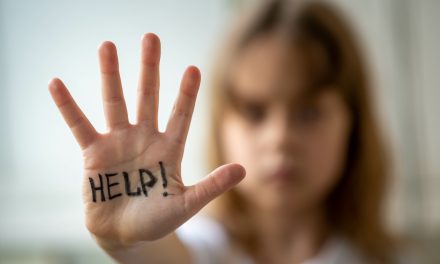Jakarta, the sprawling capital city of Indonesia, has once again been named the world’s most polluted city by IQAir, a Swiss air quality technology company. The metropolis is home to over 11 million people, and it’s struggling with a surge in air pollution that has been attributed to the dry season and motorized vehicles. The dry season’s impact and current condition, according to Asep Kuswanto, the head of Jakarta Environment Agency, Jakarta’s air quality in 2023 has been particularly erratic. The dry season, which lasts from July to September, exacerbates the city’s pollution, resulting in thick smoke and gray skies that blanket Jakarta every morning. There is a seasonal effect to be incorporated into the mix; during the dry season, the greater Jakarta area experiences deteriorating air quality due to dry air from the eastern side of the country. This year has been no exception, and with the dry season in full swing, pollution levels are peaking.
A City Clogged with Pollution From Motorized Vehicles
Data from Indonesia’s Ministry of Environment and Forestry reveals that 44% of Jakarta’s air pollution emanates from transportation, primarily motorized vehicles. The city’s streets are inundated with inefficient, poorly maintained, and polluting vehicles, including a large number of motorcycles.
Traffic and Lack of Public Transport
Jakarta’s inadequate public transportation system forces most residents to rely on private vehicles. Traffic congestion often traps these vehicles for hours, emitting pollution into the air as they idle. The lack of maintenance standards and enforcement contributes to the high levels of emissions.
Respiratory Diseases on the Rise
Pollution is not just a visual problem; it has serious health consequences as well. Cases of respiratory diseases, believed to be linked to air pollution, are increasing in Jakarta. The city’s health office has acknowledged a surge in health problems caused by pollution in 2023 compared to the previous year.
Legal Action
In 2021, the Indonesian court ruled that top officials, including President Joko Widodo, had failed to protect citizens’ rights to clean air. The court mandated improvements in air quality, reflecting the gravity of the situation and the public’s growing concern.
A Historical Perspective: Echoing Conditions of 2019 and 2018
Revisiting Past Trends
Dwi Oktavia, head of disease prevention and control at the Jakarta Health Agency, remarked that the current air pollution situation in Jakarta mirrors the conditions seen in 2019 and 2018, before the onset of the COVID-19 pandemic. The comparison underlines the chronic nature of the problem, which has persisted over several years.
The Health Implications
The link between air quality and health has been a continuing concern, with 2023’s pollution levels causing a significant increase in respiratory diseases and other related health issues. The similarity between the present conditions and those of previous years highlights a disturbing trend and emphasizes the need for immediate intervention.
Emphasizing Public Transportation
To prevent the further escalation of air pollution, Dwi Oktavia advocates for the active use of public transportation and bicycles. By reducing the reliance on private motorized vehicles, it is possible to decrease emissions and alleviate traffic congestion.
Moving the Capital City: A Radical Approach
On Monday, President Joko Widodo acknowledged that air pollution in Jakarta has been a lingering issue and proposed a bold solution: relocating the capital city from Jakarta to Nusantara on the island of Borneo.
Widodo’s Grand Plan
First proposed in 2019, the relocation plan would involve building government and residential structures around Balikpapan’s seaport, situated 2,000 kilometers northeast of Jakarta. The idea is to reduce Jakarta’s burden and distribute governmental functions, which could significantly impact the city’s pollution levels.
Mass Transportation: A Critical Component
President Widodo emphasized the importance of mass transportation as a critical part of the solution. Developing an efficient public transport system could facilitate a smooth transition and support the broader aim of reducing pollution in Jakarta.
A Crossroads for Jakarta
Jakarta’s battle with pollution is at a crossroads, reflecting both historical trends and new challenges. The city’s situation in 2023, reminiscent of conditions in 2019 and 2018, reveals a persistent problem that requires innovative and concerted efforts to address. The solutions, ranging from promoting public transportation to the radical idea of relocating the capital city, reflect the urgency of the issue and the willingness to consider broad changes. As Jakarta continues to grapple with pollution, the world watches and learns. The choices made by Indonesia’s leadership and citizens will not only shape the future of Jakarta but offer lessons for other urban centers facing similar challenges. The call for action is clear, and the time to act is now. The health and well-being of millions of people, as well as the sustainability of one of the world’s most populous cities, depend on the courageous steps taken today. Whether through everyday changes in commuting habits or bold governmental initiatives, Jakarta’s future hangs in the balance.
The Crucial Role of Air Quality Technology Companies
Monitoring and Data Analysis
In the fight against air pollution, air quality technology companies play an indispensable role. Through the use of advanced monitoring systems, these companies collect, analyze, and interpret air quality data. This information is vital for understanding the current state of pollution, tracking changes over time, and pinpointing the sources of contamination. Companies like IQAir, which named Jakarta the most polluted city in the world, provide crucial insights that governments, businesses, and individuals can use to make informed decisions. The data these companies generate can guide policy formulation, urban planning, and individual behavior.
Innovation and Solutions
Beyond monitoring, air quality technology companies are at the forefront of innovation, developing solutions to reduce pollution and mitigate its effects. From creating cleaner fuels and more efficient vehicles to designing urban landscapes that minimize pollution, these companies contribute significantly to addressing the complex challenge of air quality management.
Recognizing Our Impact: A Wake-Up Call for Humanity

The Moral Imperative
Beyond the practical considerations lies a moral imperative. We must recognize that the choices we make today have consequences not just for ourselves but for future generations. The world we leave behind should be livable, healthy, and vibrant.
A Pivotal Moment for Change
The crisis in Jakarta, a microcosm of a global issue, brings us to a pivotal moment in our relationship with the environment. The work of air quality technology companies, the courage of policymakers, and the daily choices of individuals must converge to create meaningful change. We must view the alarming air quality statistics not as mere numbers but as urgent calls to action. The challenges are immense, but so are the opportunities for innovation, collaboration, and transformation. By embracing the lessons learned from Jakarta’s struggle and recognizing the serious measures needed, we can forge a new path. It’s a path that respects the environment, values our health, and honors the legacy we wish to leave for those who follow. Our relationship with our planet is not just a matter of convenience or economics; it’s a profound moral undertaking. The damage we cause is a reflection of our values and priorities, and the time has come to choose a path that reflects our better selves. The importance of air quality, the work of technology companies, and the necessity of individual and collective responsibility form a complex but hopeful picture. The challenge is great, but the potential for positive change is even greater. The question is not whether we can make a difference but whether we will choose to do so.
A Historical Glimpse: The World’s Most Polluted Cities
The alarming air quality in Jakarta is but one example of the escalating pollution crisis. Looking back through history, we can see that the issue of pollution is a longstanding one, affecting various cities around the world at different times. These cities need more than reputation management specialists and copywriters to correct their image problem, they need to take environmental action.
Here’s a glimpse at some of the most polluted cities historically and what contributed to their conditions:
Delhi, India
Delhi has often made headlines as one of the world’s most polluted cities. Factors such as rapid urbanization, vehicular emissions, industrial activity, and crop burning in nearby regions contribute to hazardous air quality.
Beijing, China
China’s capital city, Beijing, has also faced severe pollution challenges. Rapid industrialization, dependence on coal for energy, and an increasing number of motorized vehicles led to intense smog events. The Chinese government’s strict measures and the push for renewable energy have shown some improvement, though challenges remain.
Mexico City, Mexico
Mexico City’s geographical location in a high-altitude valley has contributed to its pollution problems. This, combined with vehicle emissions and industrial activity, led to smog that became a major health concern. Implementation of regulations, public transportation improvement, and vehicle restrictions have helped alleviate the situation.
Tehran, Iran
Tehran’s pollution crisis has been fueled by a combination of factors, including heavy traffic, industrial emissions, and weather patterns that trap pollutants in the city. The situation has led to frequent school closures and health advisories.
Los Angeles, United States
While not on the scale of the cities mentioned above, Los Angeles has struggled with smog for decades. The city’s car culture, coupled with its geography and weather patterns, contributed to ozone levels that often exceeded safe limits. Regulations on emissions have had a positive impact, but challenges persist.
Solving the Problem will Take Global Cooperation and Coordination
Complex Causes: Pollution is typically driven by a complex blend of factors, including industrialization, transportation, geography, and sometimes even weather patterns.
Global Challenge: Air pollution is not confined to developing nations. It’s a global issue that has affected both wealthy and emerging economies.
Government Intervention: In many cases, strong governmental regulations and proactive policies have been central to mitigating pollution. The examples of Beijing and Mexico City show how targeted measures can make a tangible difference.
The Role of Innovation: Technological innovations in energy, transportation, and industry can play a crucial role in reducing pollution. Investment in research and development can lead to cleaner technologies that significantly lessen environmental impact.
Public Awareness and Behavior: Public understanding of the pollution problem, coupled with behavioral changes like embracing public transport, can contribute meaningfully to solutions. The current state of air pollution in Jakarta is a multifaceted problem that requires immediate attention and coordinated action. As the world’s fourth most populous country’s capital, the city’s struggle with air pollution serves as a stark warning to other rapidly urbanizing areas across the globe. The confluence of seasonal factors and transportation inefficiencies paints a grim picture for Jakarta’s citizens. However, the court ruling and increased public awareness may serve as catalysts for change, prompting authorities to implement stricter regulations and develop better public transportation alternatives. Ultimately, Jakarta’s battle against pollution underscores the urgent need for sustainable urban development, not just in Indonesia but worldwide. The health, well-being, and future of millions depend on decisive action to address the environmental challenges facing our cities today.
The historical perspective on the world’s most polluted cities serves as a cautionary tale but also provides hope. By understanding the multifaceted nature of pollution and recognizing that solutions do exist, we can work towards a cleaner future. The challenges are undoubtedly immense, but they are not insurmountable. The experiences of cities like Jakarta, Delhi, Beijing, and others remind us that the path to cleaner air requires commitment, collaboration, innovation, and sometimes tough decisions. In the end, the battle against pollution is more than a technical challenge; it’s a testament to our ability to adapt, innovate, and care for the world we inhabit. It’s a story of human resilience and shared responsibility that transcends borders and cultures. The history of pollution in our cities is a chapter in our collective story, and it’s one that we continue to write each day. By learning from the past and taking decisive action in the present, we can ensure that the legacy we leave is one of progress, not peril.

































South Florida Media Comments